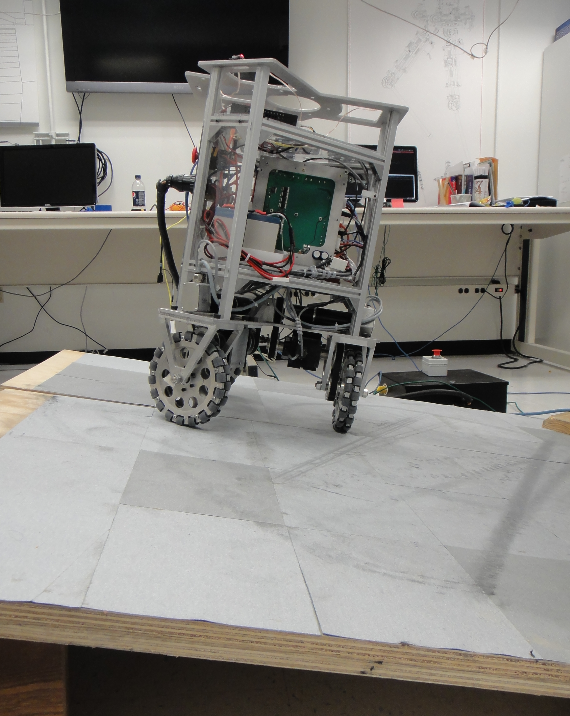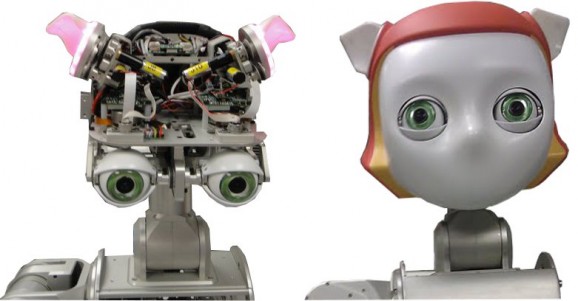Meet Dreamer, The Humanoid Robot Getting Screentime With Mark Wahlberg In Transformers
This article is more than 2 years old
 Robots can do most tasks humans can do, including making cameos in movies. I’m not talking about Haley Joel Osment or Short Circuit — this time I’m talking about Dreamer, the humanoid robot created by the University of Texas Human Centered Robotics Lab, which will appear in Transformers: Age of Extinction.
Robots can do most tasks humans can do, including making cameos in movies. I’m not talking about Haley Joel Osment or Short Circuit — this time I’m talking about Dreamer, the humanoid robot created by the University of Texas Human Centered Robotics Lab, which will appear in Transformers: Age of Extinction.
I love pretty much all things robot, but before we talk about the virtues of this particular model, I just have to say that Dreamer is a pretty terrible name for a robot — or for anything, for that matter. Robots have all kinds of cool names: Voltron, R2D2, HAL, Marvin, Bishop, Twiki, Data, Tom Servo, Asimo…even Siri’s better than that. We get it! It’s supposed to be human-like! Except one of the things it can’t do yet is to dream or be sentimental. It doesn’t need an anthropomorphizing name! Okay. Rant over. I should really be talking about how this robot is going to get 30 seconds of screen time in the new Transformers movie. It’s unclear exactly what these 30 seconds will involve, so I’ll just tell you about this robot and you can let your imaginations go wild.

Dreamer is a mobile, humanoid robot, which means that instead of pesky bipedal walking, it’s humanoid above the waist, and then its bottom half is kind of like a streamlined cart. Or maybe you’d call it a trikey mobile base. You get the picture. The robot’s upper half has arms with seven degrees of freedom and series elastic actuation, hands with tendon actuators with 5 degrees of freedom and a torque-controlled torso with three degrees of freedom. That’s a lot of freedom! It refers to the parameters involved in the configuration of mechanical systems. A car has one degree of freedom. Because cars aren’t Dreamers — and all 15 of our robot’s degrees of freedom have torque amplifiers, which basically means this guy can do a great funky chicken.

Dreamer’s got brains, too — it has a real-time application interface that runs on Ubuntu, sensory motor skill enhancing whole-body control architecture. And that’s just its upper half. It’s lower half has omni wheels with omni-directional movement, which means it can go forward and backward but can also slide to the side. It’s got torque control amplifiers and will soon have its own ethercat communication bus and autonomous battery. Then there’s the head, and those eyes remind me of the episode of the Simpsonsin which Homer licks a toad. Dreamer‘s eyes have three degrees of freedom, so he can roll them around like an irritated teenager. His ears rotate and flex — the thing can probably wiggle them too, and you can switch their color. His eyes have stereo cameras.

The Human Centered Robotics Lab realizes that most robots are in factories, and that they perform repetitive tasks and don’t have much human contact. The reason for that is because, especially in that setting, robots can be dangerous. The lab is focused on making robots safer, which involves making them lighter, more mobile, more responsive to human interaction, and generally more practical. One of their projects is figuring out how to use a hand and wrist exoskeleton to control Dreamer’s hand and arm remotely. They also are focusing on cost — right now, Dreamer costs a cool $500,000, but they want to make such robots available to the government, especially in sanitation and maintenance roles, which means reducing their price drastically. They have a $10,000 price tag in mind.
The lab anticipates a time when “everyone can have a humanoid robot to clean and do simple chores,” and by then, there may be a bunch of Dreamers around. Maybe by then they’ll be able to protect Michael Bay.












